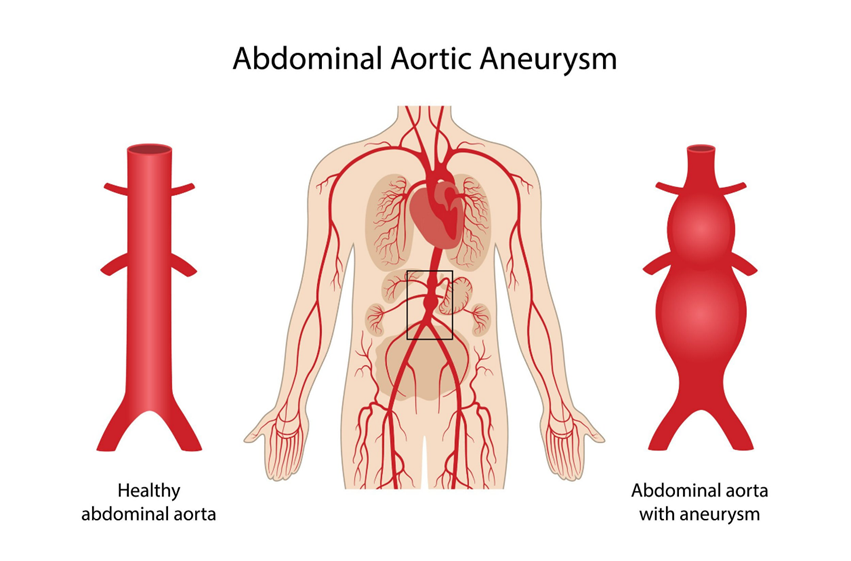The nurse is caring for a client diagnosed with an abdominal aortic aneurysm (AAA). Which of the client's vital signs will be a priority for the nurse to monitor?
Core temperature
Blood pressure
Pulse rate
Respiratory rate
The Correct Answer is B
Choice A Reason:
Core temperature is important to monitor in many clinical situations, but it is not the primary concern for a client with an abdominal aortic aneurysm. While fever can indicate infection, which is a potential complication, it is not directly related to the immediate risks associated with AAA.
Choice B Reason:
Blood pressure is the most critical vital sign to monitor in a client with an abdominal aortic aneurysm. Elevated blood pressure can increase the risk of aneurysm rupture, which is a life-threatening emergency. Maintaining blood pressure within a safe range is essential to prevent complications and ensure the stability of the aneurysm.
Choice C Reason:
Pulse rate is also important to monitor, but it is not as directly indicative of the risk of aneurysm rupture as blood pressure. While changes in pulse rate can signal cardiovascular stress or other issues, blood pressure provides more direct information about the forces acting on the aneurysm.
Choice D Reason:
Respiratory rate is a vital sign that can indicate respiratory distress or other systemic issues, but it is not the primary concern in the context of an abdominal aortic aneurysm. Blood pressure remains the most critical parameter to monitor to prevent rupture and manage the condition effectively.

Nursing Test Bank
Naxlex Comprehensive Predictor Exams
Related Questions
Correct Answer is C
Explanation
Choice A Reason:
Allowing the client to control the timing and frequency of the therapy might seem beneficial, but it can lead to inconsistent participation and lack of progress. Structured therapy sessions are essential for rehabilitation, and while some flexibility is important, a completely client-controlled schedule may not provide the necessary consistency.
Choice B Reason:
Limiting visiting hours until the client begins to participate in therapy is not an effective approach. Social support from family and friends is crucial for the emotional well-being of the client and can actually motivate them to engage more in their rehabilitation efforts. Restricting visits could lead to increased feelings of isolation and resistance.
Choice C Reason:
Establishing a plan of care with the client that sets attainable goals is the most effective approach. Involving the client in their care plan fosters a sense of ownership and motivation. Setting realistic and achievable goals helps the client see progress, which can boost their confidence and willingness to participate in therapy.
Choice D Reason:
Informing the client that privileges are related to participation in therapy can be perceived as punitive and may not be effective in motivating the client. It is important to use positive reinforcement and encouragement rather than threats or restrictions to foster cooperation and engagement in the rehabilitation process.
Correct Answer is ["20"]
Explanation
Step-by-Step Calculation:
Step 1: Identify the prescribed dose.
1000 units per hour
Step 2: Identify the concentration of heparin in the IV bag.
25,000 units in 500 mL
Step 3: Calculate the concentration of heparin per mL.
25,000 units ÷ 500 mL = 50 units/mL
Result = 50 units/mL
Step 4: Calculate the IV pump rate in mL/hr.
1000 units per hour ÷ 50 units/mL = 20 mL/hr
Result = 20 mL/hr
Final Result:
The IV pump should be set to 20 mL/hr.
Whether you are a student looking to ace your exams or a practicing nurse seeking to enhance your expertise , our nursing education contents will empower you with the confidence and competence to make a difference in the lives of patients and become a respected leader in the healthcare field.
Visit Naxlex, invest in your future and unlock endless possibilities with our unparalleled nursing education contents today
Report Wrong Answer on the Current Question
Do you disagree with the answer? If yes, what is your expected answer? Explain.
Kindly be descriptive with the issue you are facing.
